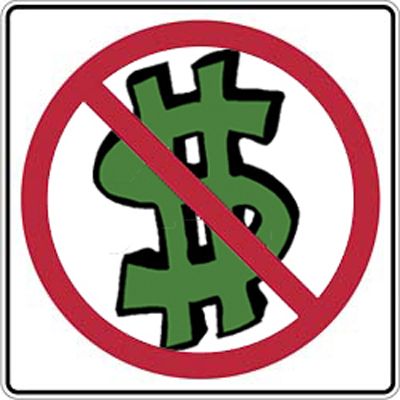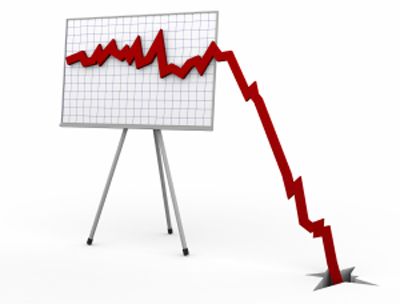wrestling / Columns
It’s Time For TNA to Kill Off Their PPVs And Move In A New Direction
Last week TNA ran what’s traditionally been its big show – Bound For Glory – over in Japan and without the bulk of its roster. It was a co-promotion with Keiji Mutoh’s Wrestle-1 outfit. Only two of TNA’s four belts got defended and nothing important to the general TNA storyline occurred. We’ll probably never know the buyrate for the event, but less than 10,000 wouldn’t surprise anyone.
By any estimation, BFG 2014 was a punt. TNA has received no small amount of criticism for it, but the criticism misses the larger point: punting BFG was a rational and forward-thinking decision by TNA and it would be wise to leave the entire PPV business in its wake. Let’s get into the specifics for why that’s the case.

1. TV is everything for TNA at the moment
In January TNA no longer will be airing on Spike TV, even though it outdraws most of Spike’s primetime programming. Supposedly the issue is TNA’s inability to grow the ratings for Impact since forever and a general lack of confidence in TNA’s management. Those are valid enough reasons I suppose. Yet the net effect is TNA has less than three months to find a new TV partner to air Impact. If it does, TNA moves forward into the next phase of its existence. If it doesn’t, TNA moves backward into a ROH-level existence or (eventually) ceases to exist altogether.

2. TNA was never all that successful with PPV
Yes, TNA got its start as a PPV entity. That all changed once Impact found its way onto Spike in October, 2005. Shortly afterward Christian Cage arrived, and by the start of 2006 TNA was cracking 25,000 on its PPV buyrates on a regular basis with spikes into the 40s. Then Sting showed up too and BFG 2006 turned out to be the high water mark for TNA’s PPV business at between 55,000-60,000 (all TNA buyrates are estimates). The business hovered a level below its 2006 high-water mark (38k average) for a few years, but a down economy began to take its toll. The reality is TNA only cracked 50,000 buys three times in its existence (BFG 2006, Genesis 2006, Lockdown 2008). It never achieved WWE-level numbers or anything even
particularly close to WWE numbers.

3. PPV is dead
The economy bit into the WWE’s PPV business too. During the bulk of the 2000s, the WWE pulled 250,000+ buys for its secondary PPVs on a regular basis. By 2013, that number had dwindled and it averaged 187,000 for its secondary PPVs (which came to include Survivor Series). That steady downward spiral is a leading reason why the WWE chose to cannibalize its PPV business with the WWE Network. It’s a dead line of business. You can continue to try to milk cash out of it, but eventually it will kill your company if you’re reliant on it. The same thing happened to Digital Equipment, Novell and Polaroid.
Obsolescence played a role as well. Why buy a PPV in a tight economy when, if you have even the most basic computer skills, you can stream a pirate feed for free? Pirate feeds could be a pain, but they also reflected a reality that wrestling companies and PPV providers no longer controlled the broadcast. The maturation of technology necessitated a change in the price point for PPVs. Simply put, no one
needs to pay $50 to watch three hours of television. That’s as pointless as shopping for a long distance service provider.
In TNA’s case, the death of PPV hit more swiftly. In 2011 the company saw its PPV buyrates fall south of 10,000 for most of its events. Part of that is it had a smaller PPV business and it was decidedly the #2 option for most U.S. wrestling fans.
So when fans became more reluctant to spend their cash on wrestling PPVs, TNA went out the window first. On top of that, Hulk Hogan and Eric Bischoff arrived in 2010, swiftly turning TNA into WCW 2.0. I can’t prove this, but it surely soured actual TNA fans on the product. All that time you had invested in younger TNA guys was getting thrown out the window in favor of geezer wrestling and tortured storylines.

4. PPV always was a bizarre way to present the product
I know the wrestling business has operated around PPV for decades, but it was a Faustian bargain. Think about it from the TNA standpoint. Somewhere between 1-1.2 million viewers tune in for Impact. Then you save all your best stuff for a PPV that gets a 20-25k buyrate. That’s 1/50th the audience for supposedly the biggest, most momentous event of the month. It’s like flipping the bird to the bulk of your viewers. How invested are they really going to be? The rest of television does not behave that way. If you follow a major sport, you don’t have to pay a premium to see the playoffs. If you regularly watch a TV show, you don’t have to go to PPV to find out who won on Survivor or to discover How I Met Your Mother.
Fight sports behave that way to a degree, though it’s mostly major fight cards and there’s plenty of non-PPV fights to watch. It works well enough to make people short-term money, but 40 years ago Muhammad Ali was the most recognizable person on planet earth. Now boxing is a second-tier sport at best, largely because its biggest stars do their work outside the focus of the public eye. The average American probably doesn’t even know Floyd Mayweather’s name, let alone recognize his face. People are really good at ignoring what’s not right in front of them. How are you supposed
to grow your audience when most of them aren’t seeing the big payoffs?

5. So what’s the way forward?
TNA recognized in 2013 that 12 PPVs a year made no sense, deciding instead to churn out One Night Only offerings and making former PPVS like No Surrender into premium televised events. BFG had been a holdout, one of the last vestiges of TNA clinging to its rigor mortis PPV business. However, BFG 2014 should have made it clear that TNA is out of the big event PPV business for the time being, and hopefully for good. It was a boutique event, a wrestling exhibition with a Japanese promotion. It shouldn’t have been priced like a traditional PPV, but that probably reflected existing contracts concerning the airing of the event.
TNA instead has been putting its major fights on Impact. Two weeks ago Havok won the Knockouts title. Last week Wolves prevailed in their series against the Hardys and Team 3-D. This week Bobby Roode beat the other top challengers to get one more shot at Lashley for the TNA title. A million-plus saw each of those matches. TNA put its best stuff on the air for the maximum number of people to see. Suddenly, it’s real easy to follow TNA. Tune in each week and they’re not holding anything back. That’s pro wrestling you can believe in. If it finds a new broadcast partner, it probably would make more sense to turn BFG into a separate over-the-air event on a Sunday or Saturday night. If TNA draws elevated numbers for quarterly special events, then advertiser dollars will follow. Basically, behave more like a sport while entertaining a larger number of people.
The fight is for eyeballs. TNA punting on BFG was not a sign of a company that is operating without a clue, rather it’s a sign of a company that finally looked at its business model and made some critical changes. Unfortunately, it might be a deathbed realization in TNA’s case. Yet it does open the door to a wrestling company operating in full public view. An action-focused wrestling show is fun to watch. In a fair world, TNA will get the chance to keep doing it and then it can live or die based on the quality of what it delivers. And if TNA suffers its demise in the near future, then at least we can say that in its final days it experienced an inspired burst of clarity, that it went out with its head held high and with a lesson for
those who might follow in its footsteps.
TNA is giving us pro wrestling without the traditional bait-and-switch. If you’re a wrestling fan you should enjoy it while it lasts.
More Trending Stories
- Backstage Notes From WWE Draft Night 1 on SmackDown, Why There Were So Few Roster Changes
- Jim Ross Thinks Randy Orton’s WWE Backlash 2004 Match Put Him On The Map
- More 2024 WWE Draft Picks Continue Following SmackDown, Updated Draft List
- New QR Code on WWE SmackDown Reveals Survey & Uncle Howdy Teases







